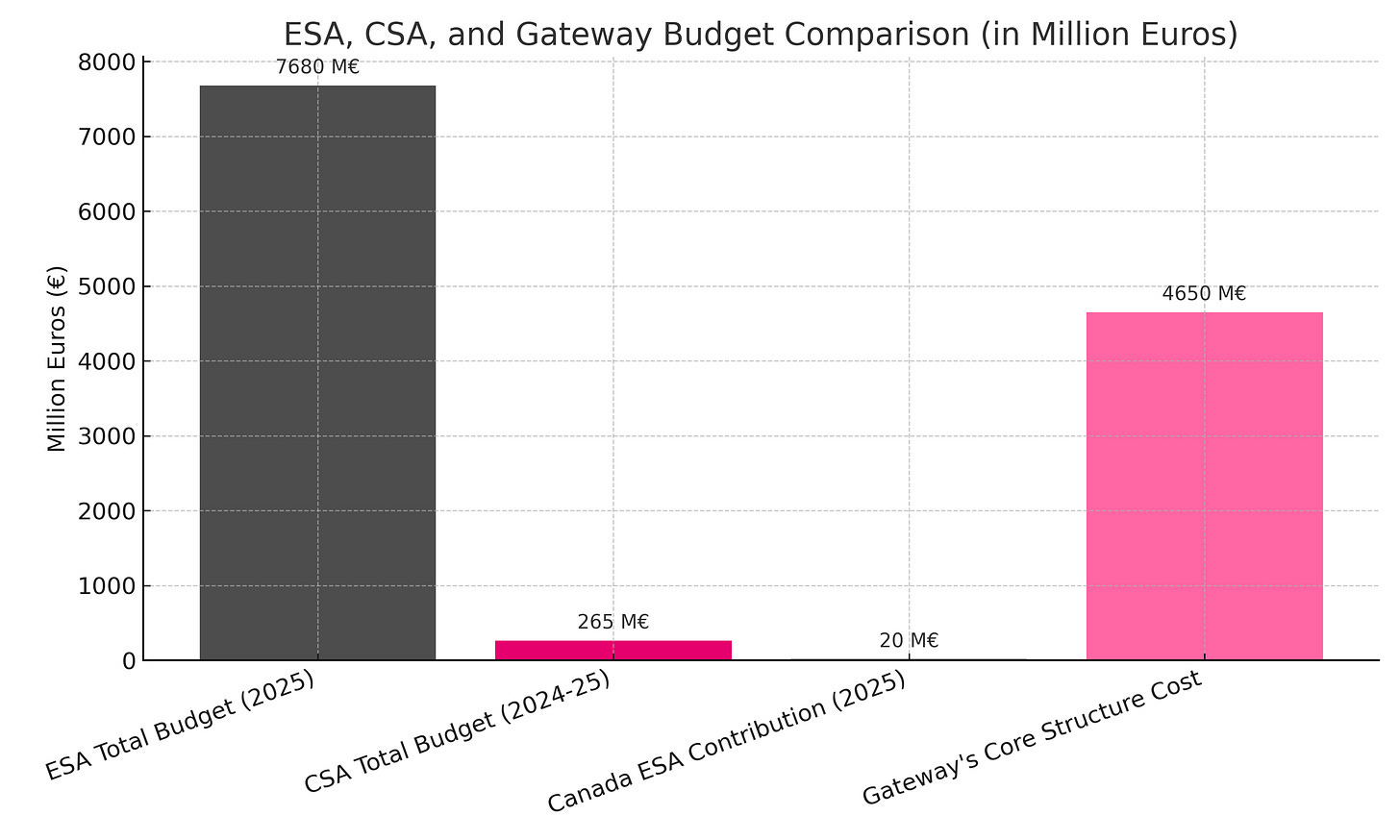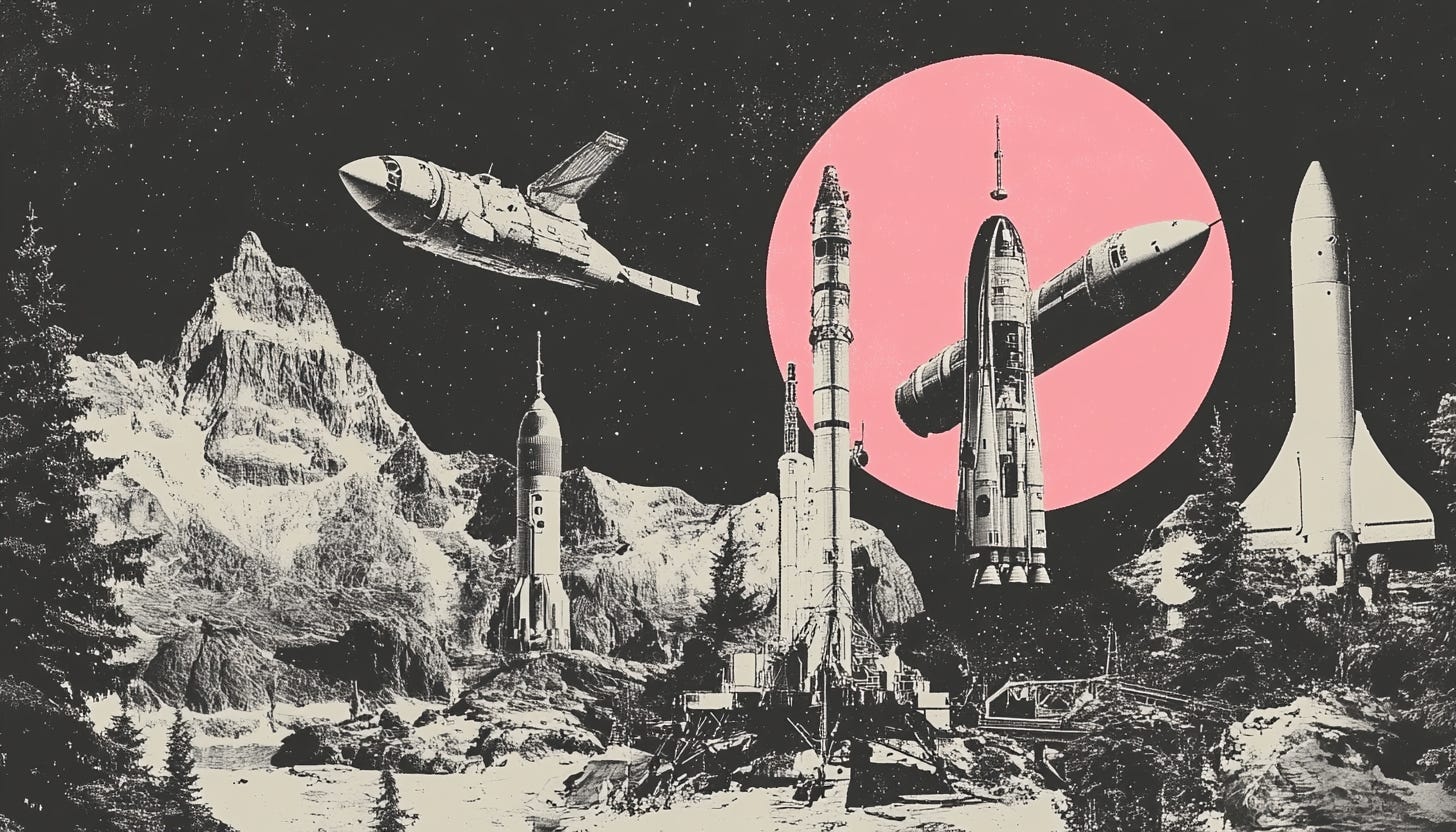ESA Courts Canada as Artemis Wobbles
With Artemis in limbo, ESA and CSA explore a plan B—assuming someone can foot the bill
For the first time in 25 years, a Director General of the European Space Agency visited the Canadian Space Agency headquarters in Quebec. The timing is telling: Europe and Canada are edging closer to a joint vision for space—especially now that the U.S. alliance feels on pause. Intentions are clear. Hands were shaken. Now comes the hard part: who pays, and for what?
On June 6th, ESA Director General Josef Aschbacher, accompanied by eight senior ESA officials, met with Canadian Space Agency (CSA) President Lisa Campbell in what both parties described as a “historic” occasion. The visit marked Aschbacher’s first to CSA during his tenure, and the first by any ESA Director General in a quarter century.
The centerpiece of the visit was the signing of the ESA–Canada Mid-Term Review Joint Statement. The agreement sets the tone ahead of the 334th ESA Council meeting in Paris (June 11–12) and, more critically, the upcoming ESA Council Ministerial (CM25) in Bremen this November. Additionally, ESA and CSA announced the creation of a bilateral task force focused on aligning their priorities across three domains: Earth observation, human and robotic exploration, and secure satellite communications.
Why now?
There are two main reasons for this long-overdue diplomatic visit, both outlined in the joint press conference. First, Aschbacher cited a context of “unprecedented geopolitical challenges, increasing tensions and fragmentation, unstable economic environments, shifting priorities, [and] increasing protectionism”—a polite way of saying: we can no longer rely on the Americans.
Second, in a notably candid moment, Aschbacher added: “We really value your patronage, and your absolutely necessary support to make this possible for [ESA] to develop and really bloom in the future.”
Translation: Europe needs money, and Canada is one of the few democratic allies still talking space cooperation while Washington reconsiders its commitments.
At the heart of this flurry of diplomacy lies the Artemis program—particularly Gateway. For ESA, Gateway represents its flagship lunar contribution. For Canada, it’s the ticket to send its first astronaut around the Moon (via Artemis II, now delayed to 2026).
With the U.S. reportedly eyeing significant Artemis cuts, the stakes are existential for both agencies. The Gateway module could be scaled back or scrapped altogether, and with it, years of investments by both Europe and Canada.
Canada and ESA: Historical Partners, Present-Day Problems
ESA and Canada have been cooperating since 1979, so the alliance is no surprise. However, the problem, as always, is funding.
In 2025, Canada contributed €20 million to ESA—0.4% of ESA’s €7.68 billion annual budget. CSA’s own annual budget for 2024-2025 is CA$413 million (CA$349 million for CSA core services and CA$64 million for its internal services), which amount to ~€265 million, roughly 6% of ESA’s, on par with countries like Spain.
For context: NASA’s current Gateway core module is estimated at $5.3 billion (€4.65 billion)—about 60% of ESA’s entire budget. In short: ESA needs "sizable material support," in Aschbacher’s words. Will Canada increase its contribution? Modest increases seem feasible—especially if saving Canadarm3 and the planned 2026 lunar rover is on the line.

Whether Gateway survives a potential U.S. pullout is an open question. Either it will be radically redesigned, or all that engineering will have to be redirected toward other, more achievable missions—ideally ones that remain strategic for both ESA and CSA.
Shared Strategy? Maybe. Shared Budgets? Unclear.
In 2025, NASA’s budget was approximately €23.37 billion (US$25.4 billion), ESA’s was €7.68 billion, and Canada’s CSA had a budget of €265 million (CA$413 million) for the 2024–2025 fiscal year. This means NASA’s budget is about 3.0 times larger than ESA’s, and ESA’s budget is around 29.0 times larger than Canada’s.
Canada’s Lunar Exploration Accelerator Program (LEAP) aims to keep its science and tech relevant in the upcoming wave of lunar exploration. Meanwhile, ESA is anchoring multiple Gateway elements—Lunar I-Hab, Lunar View, and Lunar Link. So yes, a Canada–ESA alliance to salvage Gateway is appealing. But unless new deep-pocketed players step in—Japan? UAE?—the numbers simply don’t add up.
Beyond the Moon, there’s another logical area for partnership: Earth observation. ESA is a global leader here, especially in climate and environmental monitoring. Canada, for its part, operates the RADARSAT+ constellation and is planning the High-altitude Aerosols, Water vapour, and Clouds mission for 2031, in cooperation with NASA’s Atmosphere Observing System (AOS). A tie-in with ESA’s Copernicus constellation could make strategic sense.
So while the Moon may dominate headlines, Earth may offer the more realistic path forward.
Waiting on Paris—and Bremen
The recent ESA–CSA meeting wasn’t the place to talk numbers or alternative Artemis strategies. That conversation will start in earnest at ESA’s June Council meeting in Paris, where proposals for the bigger Bremen CM25 summit will be hammered out.
When asked by Space Intel Report whether Canada would increase its contribution to ESA, CSA responded:
“[CSA] is currently conducting a nationwide survey with Canada’s Space Sector to gather Canadian priorities for Canada’s projects under ESA. The results of this survey will help inform our decision-making process ahead of the ESA Ministerial Council this coming November.”
Translation: no decision yet.
Similarly, ESA has not confirmed its contingency plan should NASA pull out of Gateway. When asked whether a joint ESA–CSA Gateway project could emerge in that case, an ESA spokesperson stated:
“We are in discussions with NASA and are analysing the potential implications with our Member States. In parallel, we are maintaining close contact with our long-standing international partners. Potential actions and alternative scenarios for impacted ESA programmes and related European industry will be assessed with our Member States at the next iteration of ESA Council, taking place on 11-12 June.”
In other words: wait for the Council.
And so we will.
References
ESA 2025 Budget: https://www.esa.int/ESA_Multimedia/Images/2025/01/ESA_budget_2025
CSA 2024-2025 Budget: https://www.asc-csa.gc.ca/eng/publications/dp-2024-2025.asp
Gateway Budget: https://www.gao.gov/assets/gao-24-106878.pdf
NASA FY2025 Budget: https://www.nasa.gov/fy-2025-budget-request/
ESA Courts Canada as Artemis Wobbles © 2025 by Emma Gatti is licensed under CC BY-NC-ND 4.0




